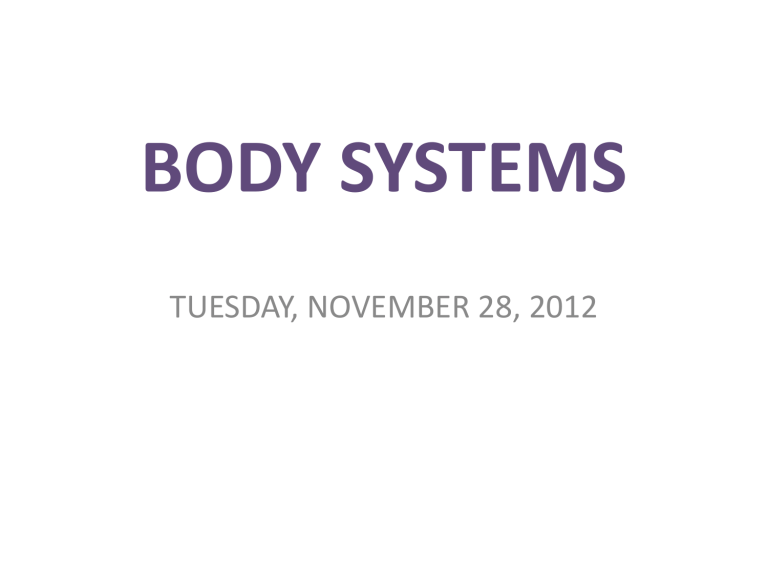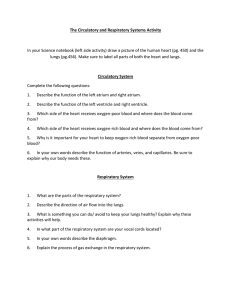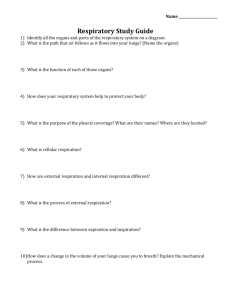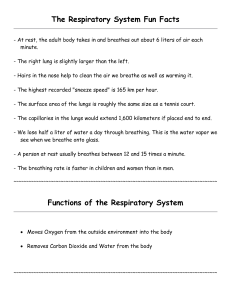BODY SYSTEMS TUESDAY, NOVEMBER 28, 2012

BODY SYSTEMS
TUESDAY, NOVEMBER 28, 2012
CARDIOVASCULAR SYSTEM
• Heart
– Muscle
– Located in the middle of your chest, behind and slightly to the left of your breastbone.
Sends blood around body
Right side – receives blood from body and pumps it to the lungs
Left side – receives blood from lungs and pumps it to the body
– Made up of four blood-filled areas called chambers
• Top: atria (left atrium and right atrium) – fills with blood returning to the heart from body and lungs
• Bottom: left and right ventricles – squirts blood to the body and lungs
• Blood
– Provides body with oxygen and nutrients it needs; carries away wastes
• Blood vessels
BLOOD VESSELS
• Arteries and veins together
• Attached to the heart
• Arteries carry blood away from the heart
• Veins carry blood back to the heart
• Movement of blood through the heart and around the body is circulation. Takes less than 60 seconds to pump blood to every cell in your body (blood delivers oxygen to all body cells)
HEART FACTS
• Beats 60-100 times/minute
• Can beat much faster when needed
• Beats about 100,000 times/day; more than 30 million times/year
• While sleeping, pumps just enough to provide for lower amounts of oxygen needed at rest
• While exercising or frightened, it pumps faster to get more oxygen to our bodies
• Weighs between 7-15 ozs.
HEART PROBLEMS
• Congenital – present at birth
• Acquired – problems developed after birth
RESPIRATORY SYSTEM
• Respiration- term used for the exchange of oxygen from the environment for carbon dioxide from the body’s cells.
• The process of taking air into the lungs –
INHALATION
• The process of breathing air out -
EXHALATION
RESPIRATORY SYSTEM
• Nose, throat, voice box (larynx), trachea
(windpipe), and lungs.
• Muscles that help you breath
(diaphragm, abdominal and neck muscles)
RESPIRATORY SYSTEM
• Carbon dioxide – waste gas produced when carbon is combined with oxygen
• Allows oxygen in the air to be taken into the body; also allows the body to get rid of carbon dioxide when breathing out
RESPIRATORY SYSTEM
• CILIA – tiny hairs that protect the nasal passageways and parts of the respiratory tract.
• Respiratory system filters out foreign matter and organisms that enter through the nose and mouth.





